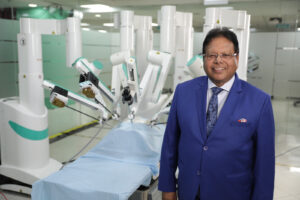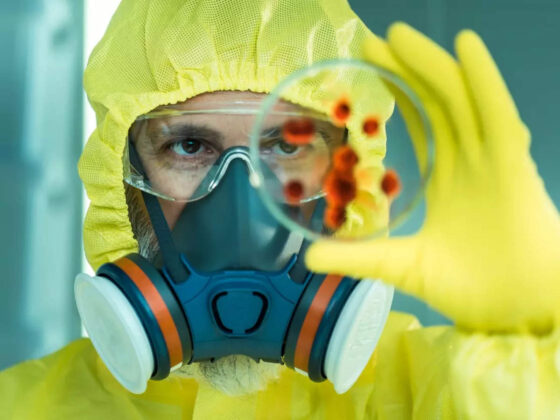By – Dr.Sudhir P Srivastava, Founder, Chairman & CEO, SS Innovations
Robotic-assisted surgery has the potential to transform patient care by emphasizing accuracy and minimally invasive treatments. Over the last few decades, robotic surgery has emerged as a game changer in patient care. This technology combines robotic precision with the experience of skilled surgeons to improve surgical operations and patient outcomes.
Robotic systems may offer stable and accurate motions
 In surgical procedures, robotic systems provide great degrees of precision and accuracy. The robotic arms can make minute motions with high precision, lowering the danger of human error and uplifting the likelihood of success. This is especially critical for complex procedures where even minor mistakes might have serious repercussions. Even the most experienced surgeons sometimes experience minor hand tremors particularly when performing delicate procedures, robotic systems may filter out these tremors during surgery, offering stable and accurate motions.
In surgical procedures, robotic systems provide great degrees of precision and accuracy. The robotic arms can make minute motions with high precision, lowering the danger of human error and uplifting the likelihood of success. This is especially critical for complex procedures where even minor mistakes might have serious repercussions. Even the most experienced surgeons sometimes experience minor hand tremors particularly when performing delicate procedures, robotic systems may filter out these tremors during surgery, offering stable and accurate motions.
Many complex surgeries can be performed with accuracy by surgeons in regions where human hands may feel confined. Better 3D visualization allows the doctor at the console to have a precise and close-up picture of the surgical area, allowing for a magnified perspective and exceptionally precise procedures. One of the most significant benefits that the robotic system has brought for patients is that it has made procedures less traumatic and more precise, among an abundance of other perks. Some modern robotic systems may do remote surgery in the future, in which a surgeon can operate on a patient in a separate geographic location, while this concept is still in its early stages and has numerous hurdles it has the potential to provide expert care to patients in rural areas.
Robotic surgery allows surgeons to conduct difficult procedures with smaller incisions, resulting in less tissue damage, less pain, shorter hospital stays, and faster patient recovery times. It has enabled surgeons to conduct complicated surgeries. This includes procedures in difficult-to-reach regions or requiring complicated maneuvering. It lowers the risk of infection because the procedures of small incisions are less prone to infection than bigger wounds. As a result, patients recover faster with a lower chance of challenges.
Unlocking Wellness In Children: The Healing Power Of Art Therapy | ALSO READ
Robotics has proved time and again that it is the best way forward to flawless surgeries. The use of robotics in surgery has transformed medicine, benefiting both patients and surgeons.










